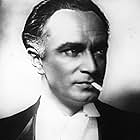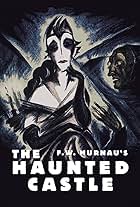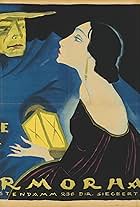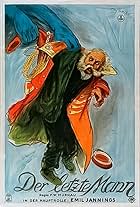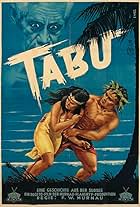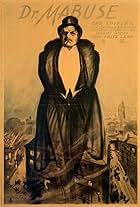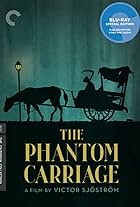This was the first of three in a season of Murnau films that I saw at the National Film Theatre (NFT) in London (Jan 2001). It was also the first time I had seen a silent film in a cinema, the screening was enhanced by a live piano accompaniment.
According to the handout from the NFT it is the oldest of Murnau's surviving complete works. It was certainly the most unsophisticated of the three films that I saw, the other two being The Last Laugh and Nosferatu. The plot is a clumsy romantic melodrama primarily involving an eye surgeon, a dancer and a blind painter. To be honest, I thought that overall the film was a naff as it sounds. However there were a number of worthwhile moments.
Apparently Murnau was unhappy with the acting of most of the cast, and I can confirm that it was old fashioned (even for 1920) stiff and exaggerated. However, without an extensive background in silents, I did not find the performance of Olaf Fonss as the eye surgeon too distracting. The acting highlight, and an anti-reason to try to see the film, was the astounding performance of Conrad Veidt as the blind painter.
Veidt was obviously flush with the success of his performance as Cesare in `Caligari' and seems to have decided to do it again! I think his eerie performance in this film is every bit as memorable as Cesare. Murnau's use of naturalistic settings seems to enhance horrific effect through the form of understatement, as was clearly shown later in Nosferatu. Veidt slides around the film fingers first as the male romantic lead producing an aura that, for me, made it impossible to believe that Gudrun Bruun-Steffensen as Lily could possibly fall in love with him. A question mark also hangs over the abilities of the blind painter who first appears standing upright in a rowboat gliding over an inlet (that would have worked fabulously in a horror film!) and is able to disembark on to a raised jetty unassisted
without stumbling. I don't know if you've ever tried to disembark from a small boat, even with sight it's not easy. Sadly Veidt's performance, fabulous in isolation, is totally out of keeping with the film!
The other highlights of this film are when Murnau has got the cast out of the way and employed a variety of lingering scenic shots. There are many cuts to seascapes in this film and they have a compositional beauty that is almost uplifting. Murnau clearly has a skill in employing landscape and I think that all the scenic shots in all the three films that I saw worked well, succeeding in conveying as much of the essence of each film as the more overt moments.



